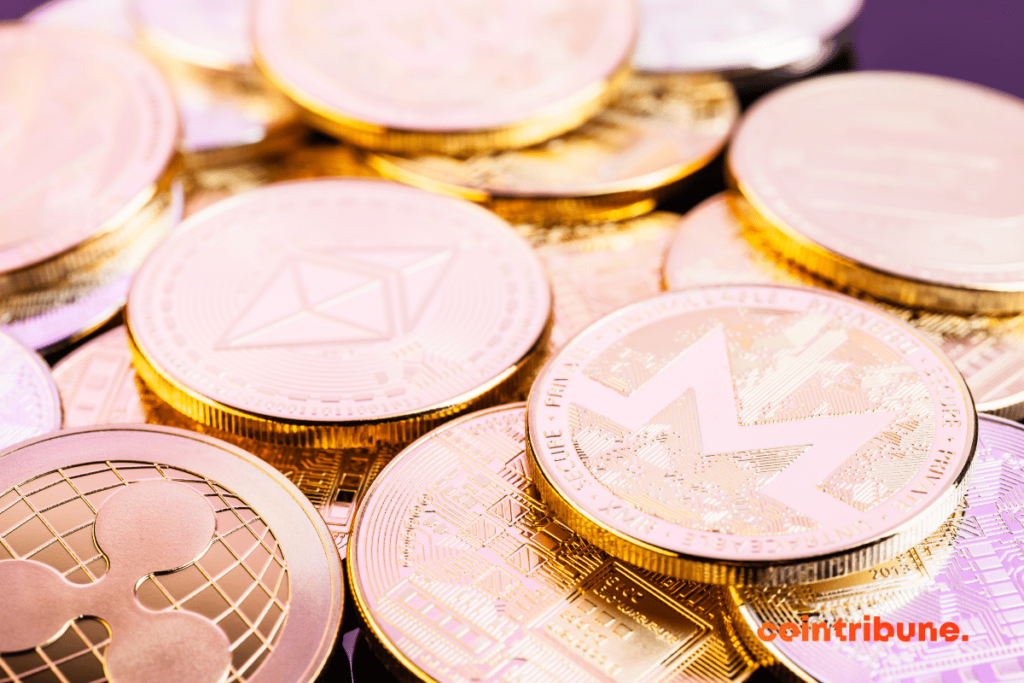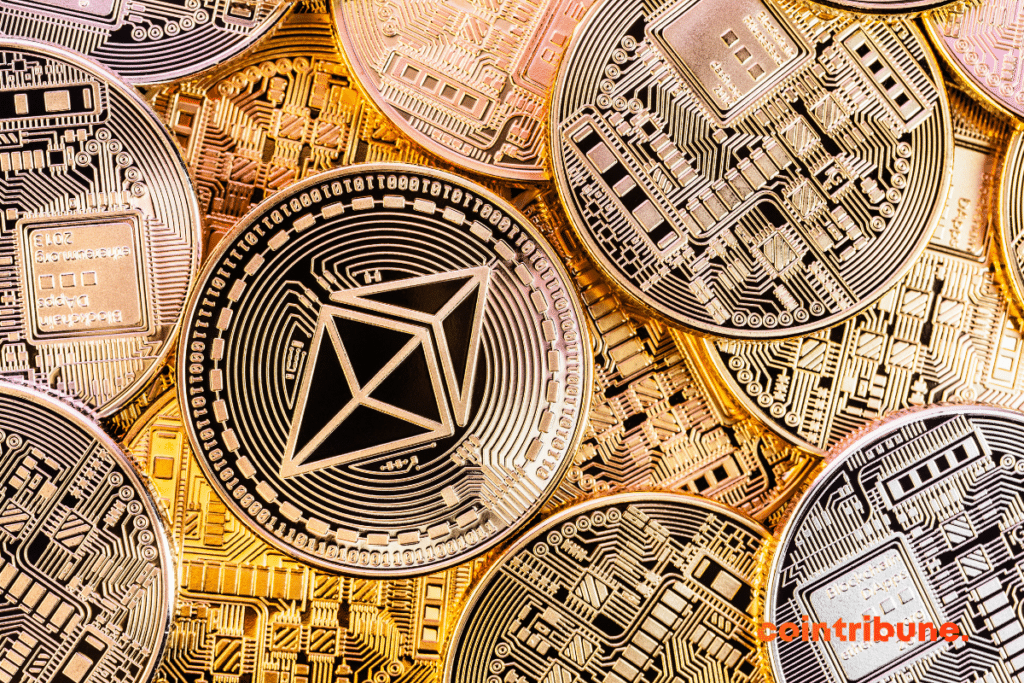The History of Altcoins: A Journey Back in Time
Altcoins or alternative currencies emerged out of the necessity to broaden the possibilities offered by Bitcoin to meet the diversified demands of the cryptocurrency market. Since the advent of Bitcoin, numerous other cryptocurrencies have come into existence, each with its own vision and technological innovations. This article explores the history of altcoins, tracing their evolution from the early days of blockchain to their current role in the digital economy.

The Genesis of Altcoins
Altcoins emerged as a response to the limitations of Bitcoin, the first cryptocurrency. They were designed to enhance or complement Bitcoin’s functionalities by offering innovations in terms of speed, security, and utility. These alternative currencies quickly gained ground, attracting the attention of investors and developers eager to explore possibilities beyond Bitcoin.
Early Steps of Altcoins
The first altcoin, Namecoin, was introduced with the intention of decentralizing the domain name registration, an initiative to resist censorship and promote freedom of expression. By using Bitcoin’s source code, Namecoin paved the way for other altcoins to follow suit and differentiate themselves. Developers began tweaking Bitcoin’s code to improve performance and add new features, ushering in a new era of digital currency.
Innovation and Differentiation
Each altcoin is built with specific code, aiming to offer a unique value proposition. For example, Litecoin was created to enable faster transactions. Others, like Peercoin, introduced proof of stake, an alternative method to Bitcoin’s proof of work model, to validate transactions. These innovations reduced transaction costs and time while paving the way for new blockchain applications.
Altcoins and Market Expansion
The introduction of altcoins marked the beginning of cryptocurrency market expansion. Not only did they offer alternatives to Bitcoin, but they also created a diverse ecosystem of digital currencies. Altcoins spurred competition, prompting continuous improvement among crypto assets. With hundreds of altcoins in circulation, the market became rich in options, offering users a variety of choices based on their specific transaction, security, and investment needs.
The Rise and Diversification of Altcoins
The expansion of altcoins transformed the cryptocurrency landscape, providing users with an extensive range of options beyond Bitcoin. This diversification was fueled by continuous innovation and the desire to meet users’ specific needs, whether it be transaction speed, security, privacy, or decentralized applications. Altcoins played a crucial role in the adoption and integration of cryptocurrencies into various economic sectors.
Technological Innovation of Altcoins
Altcoins introduced significant technological advancements to the blockchain world. Ethereum, for example, revolutionized the concept of smart contracts, allowing users to create decentralized applications on its platform. This innovation paved the way for an ecosystem where tokens can represent digital assets, ownership shares, and digital collectibles. Other altcoins introduced improvements in transaction speed, such as Litecoin, or privacy, such as Monero and Zcash, offering anonymous and untraceable transactions.
Diversification and Specialization of Altcoins
The diversification of altcoins led to increased specialization within the cryptocurrency ecosystem. Some altcoins like Ripple (XRP) focused on optimizing cross-border payments for financial institutions, while others like Chainlink developed solutions to link real-world data to smart contracts. This specialization allowed altcoins to target specific niches, offering tailored solutions for various industries and creating added value for distinct market segments.
Impact on the Cryptocurrency Market
The rise of altcoins had a significant impact on the cryptocurrency market, increasing the total market capitalization and attracting a broader audience. Altcoins contributed to democratizing access to blockchain technologies, allowing new users to enter the market with more accessible investments compared to Bitcoin. Additionally, competition among altcoins spurred constant innovation, with projects seeking to improve their technology, governance, and ecosystem to stand out in a crowded market.
Altcoins and the 2017 Speculative Bubble
The year 2017 marked a turning point for the cryptocurrency market, witnessing an unprecedented surge in interest and investment in altcoins. This period was characterized by a massive wave of speculation, where the value of many altcoins reached historic highs before experiencing an equally spectacular correction. This speculative bubble had lasting repercussions on the perception and regulation of cryptocurrencies.
Market Volatility of Altcoins
The 2017 bubble highlighted the inherent volatility in the altcoin market. Prices skyrocketed to stratospheric levels, often based on speculation rather than the fundamental value of projects. When the bubble burst, it led to a rapid and steep decline in prices, leaving many investors with heavily devalued assets and questioning the long-term viability of many altcoins.
Lessons Learned and Post-Bubble Future
The market correction following the speculative bubble served as a lesson in humility for the cryptocurrency industry. It prompted greater caution among investors and underscored the need for better regulation. Since then, the altcoin market has matured, with increasingly informed investors and projects focusing on creating real value rather than speculation. The bubble also paved the way for greater institutional adoption and attracted regulators’ attention, contributing to stricter standards for ICOs and altcoins.

Regulation and Its Impact on Altcoins
Regulation has become a key factor in the evolution of the altcoin market. Governments and financial institutions have begun developing regulatory frameworks for cryptocurrencies, influencing the perception and adoption of altcoins. These regulations aim to protect investors, prevent money laundering, and stabilize the market, but they may also limit innovation and the growth of the cryptocurrency ecosystem.
Notable Altcoins and Their Contribution to the Ecosystem
Altcoins such as Ether have made significant contributions to the cryptocurrency ecosystem, going beyond financial transactions to facilitate the creation of smart contracts and decentralized applications. Ethereum, in particular, introduced a platform where users can develop applications that operate based on decentralized consensus, without the intervention of third parties. This innovation paved the way for asset tokenization and the emergence of the non-fungible token (NFT) economy, revolutionizing the art and collectibles market. Other altcoins, like XRP, have aimed to optimize international payments for financial institutions, offering faster and less costly transactions than traditional systems.
Current and Future Challenges of Altcoins
Altcoins face a series of challenges that will determine their future in an ever-evolving market. Scalability remains a major issue, as networks’ ability to handle a large volume of transactions without excessive fees or delays is crucial for widespread adoption. Security is also a constant concern, with altcoins needing to continually defend against attacks and potential vulnerabilities.
Additionally, interoperability between different blockchains presents a challenge for altcoins, as it would enable seamless transactions and broader technology integration. From a regulatory standpoint, altcoins must navigate a complex legal landscape that varies significantly from one jurisdiction to another, potentially hindering their adoption and growth.
Conclusion
Altcoins have not only enriched the cryptocurrency landscape but have also paved the way for future technological advancements. Faced with challenges related to scalability, security, and regulation, these cryptocurrencies continue to evolve, striving to strike a balance between innovation and stability. Their future, intrinsically linked to their adaptability and adoption by the general public, remains fertile ground for investors and regulators.
Maximize your Cointribune experience with our "Read to Earn" program! For every article you read, earn points and access exclusive rewards. Sign up now and start earning benefits.
The Cointribune editorial team unites its voices to address topics related to cryptocurrencies, investment, the metaverse, and NFTs, while striving to answer your questions as best as possible.
The views, thoughts, and opinions expressed in this article belong solely to the author, and should not be taken as investment advice. Do your own research before taking any investment decisions.